Miami area trade dips in 2013 from record high
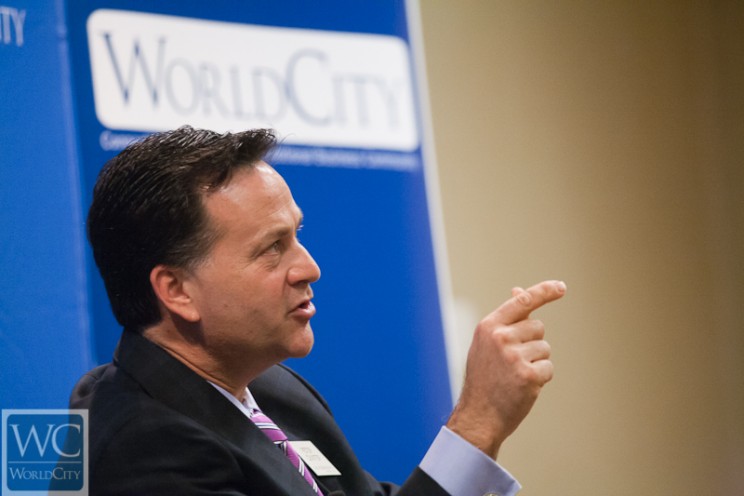
The forecast proved right: South Florida’s trade with the world dipped in value in 2013, prompted mainly by lower prices for gold.
For the full year, trade through the Miami Customs District fell by 3.3 percent to $120.4 billion, pushing Miami down two notches to rank No. 12 spot among districts nationwide, new U.S. data shows.
Still, it was the second highest trade total on record for the area that reaches from Key West to Fort Pierce, trailing a banner 2012.
Trade data guru Ken Roberts shared the latest numbers at WorldCity’s Trade Connections on Feb. 21, confirming his December forecast. Attendees also debated key trade issues, including ways to better balance the needs of security and trade at U.S. seaports and airports to speed legitimate commerce.
For 2013, the game-changer was the value of gold. With the recession, Miami had become a gold hub, as investors turned to the metal as a hedge against financial turmoil. As prices soared, gold became Miami’s top import and top export by value – until 2013, said Roberts, World City’s president.
Last year, as gold prices plunged, Miami’s No. 1 import switched to civilian aircraft, parts and engines. Gold fell to No. 3, after cellphones, land phones and parts. And Switzerland – the prime destination for gold – dropped from Miami’s No. 3 trade partner to No. 10, Roberts told Trade Connections.
In all, South Florida’s exports dropped 7.2 percent to $67.9 billion, while imports rose 2.2 percent to $55.5 billion. That produced yet another trade surplus for the area, long known as “the shopping cart” for sales to Latin America.
But many in attendance were less concerned with trade value than volume. Airports and seaports make their money on tonnage. And by that measure, business remains in slow growth mode, many said.
Obstacles to speedy growth in trade
One hindrance to faster expansion: tighter security since the Sept. 11, 2001 terrorist attacks that has boosted paperwork and costs, sending some trans-shipment business to ports outside the United States, said Panelist Peter Quinter, a trade lawyer at Gray-Robinson law firm in South Florida.
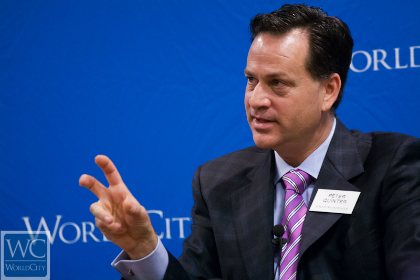
Peter Quinter, a trade lawyer at Gray-Robinson law firm in South Florida. Photos by Carlos Miller
Quinter said too often, U.S. officials obsess over security and undervalue the importance and the needs of legitimate commerce and travel. “It shouldn’t be, “Welcome to the United States, and go into this side room, we want to ask you some questions,” Quinter said emphatically.
Authorities even over-reach when they stop goods passing through Miami en route to other countries, simply because the items don’t comply with U.S. product standards., Quinter added. One example: a medical device made in Asia, bound for Honduras and approved for use there. During transit through Miami, it is seized, because he device is not approved for U.S. sale by the Food and Drug Administration.
“My question is: Why are we getting involved in their business?,” Quinter asked. “I don’t think it matters [if there is U.S. approval for use] if the product is going to be used in Honduras.”
More trade finance needed
Also hindering business: too little trade financing, said panelist James Varnadoe, managing director of KVR Trade Finance of Miami. His company specializes in financing for small- and mid-size enterprises in Latin America, often trading within Latin America. It provides loans up to 180 days and generally pays the money to the goods supplier directly, he said.
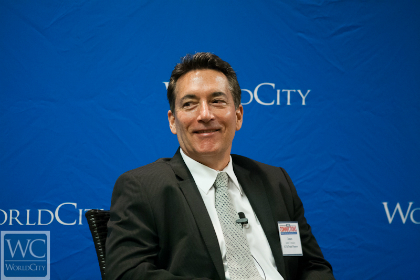
James Varnadoe, managing director of KVR Trade Finance of Miami.
“Most banks [in the United Sates] are focused on exports that qualify for Ex-Im Bank insurance” to minimize their risk, said Varnadoe. Too few lenders make the effort to weigh risk and to seek out private insurance to meet the needs of companies involved in trade, he said.
Among Varnadoe’s best bets for trade loans in Latin America by country: Mexico, with its growing base in manufacturing; Brazil, the region’s largest market; plus Colombia and Peru, two rising nations pursuing free-trade deals.
Countries urged to harmonize documentation
Another complication for trade: documentation that differs widely among nations. U.S. requirements have escalated, and goods often are held up by U.S. authorities for incomplete or incorrect information.
“Ever since 9-11, the amount of data that has to be supplied to U.S. Customs and Border Protection is amazing, down to the color of the orange that is coming in and what size is the orange,” said Quinter.
More recently, Customs authorities have been adopting a more “common sense” approach and “commercial thinking,” recognizing that trade is a lifeblood in South Florida, said Nehama Bivosky, president of Maritime Consulting Enterprise and formerly, a vice president at Israel’s ZIM shipping line.
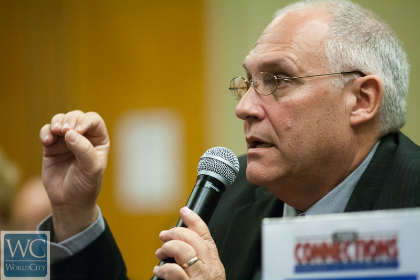
Ernesto Rodriguez, an aviation marketing specialist at MIA, the top airport nationwide for international cargo
And Miami International Airport, for one, has been sponsoring sessions in Colombia and other Latin American nations that include tips on how to fill out forms and speed processing, said Ernesto Rodriguez, an aviation marketing specialist at MIA, the top airport nationwide for international cargo.
“We take the initiative to educate importers and exporters,” Rodriguez said from the audience. That’s key because many items handled at the airport are perishable, from flowers to salmon and raspberries.
Opportunities to expand perishables trade
Fruits, fish and other perishables are seen as a key area for trade growth longer-term, thanks in part to the hefty consumption by residents and tourists in South Florida itself, participants said.
One promising area: Direct shipments of certain fruits from South America that long have been required to enter Philadelphia or other U.S. northern ports to avert the spread of certain bugs in the warmer south. New technologies now can avert those pests and bring goods to Florida faster, attendees said.
A pilot program involving “cold-treatment” of blueberries and grapes sent from Peru and Uruguay to South Florida shows encouraging results and could spur a change in decades-old rules, said Quinter.
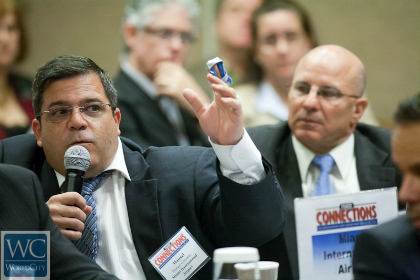
Manny Gonzalez, chief of business ventures for MIA
High-tech items also likely to be traded more in the future: Cellphone components shipped to Brazil and other Latin American nations for assembly there. Said Manny Gonzalez, chief of business ventures for MIA: “Follow the iPhone.”
Trade Connections is one of six event series organized by WorldCity to bring together executives on international business topics. The Trade series is sponsored by PortMiami, Miami International Airport and American Airlines Cargo.
The next Trade Connections is a luncheon set for Thursday, May 1 to honor World Trade Month and distribute the 14th annual edition of WorldCity’s Miami TradeNumbers.
::/introtext::
::fulltext::::/fulltext:: ::cck::12950::/cck::